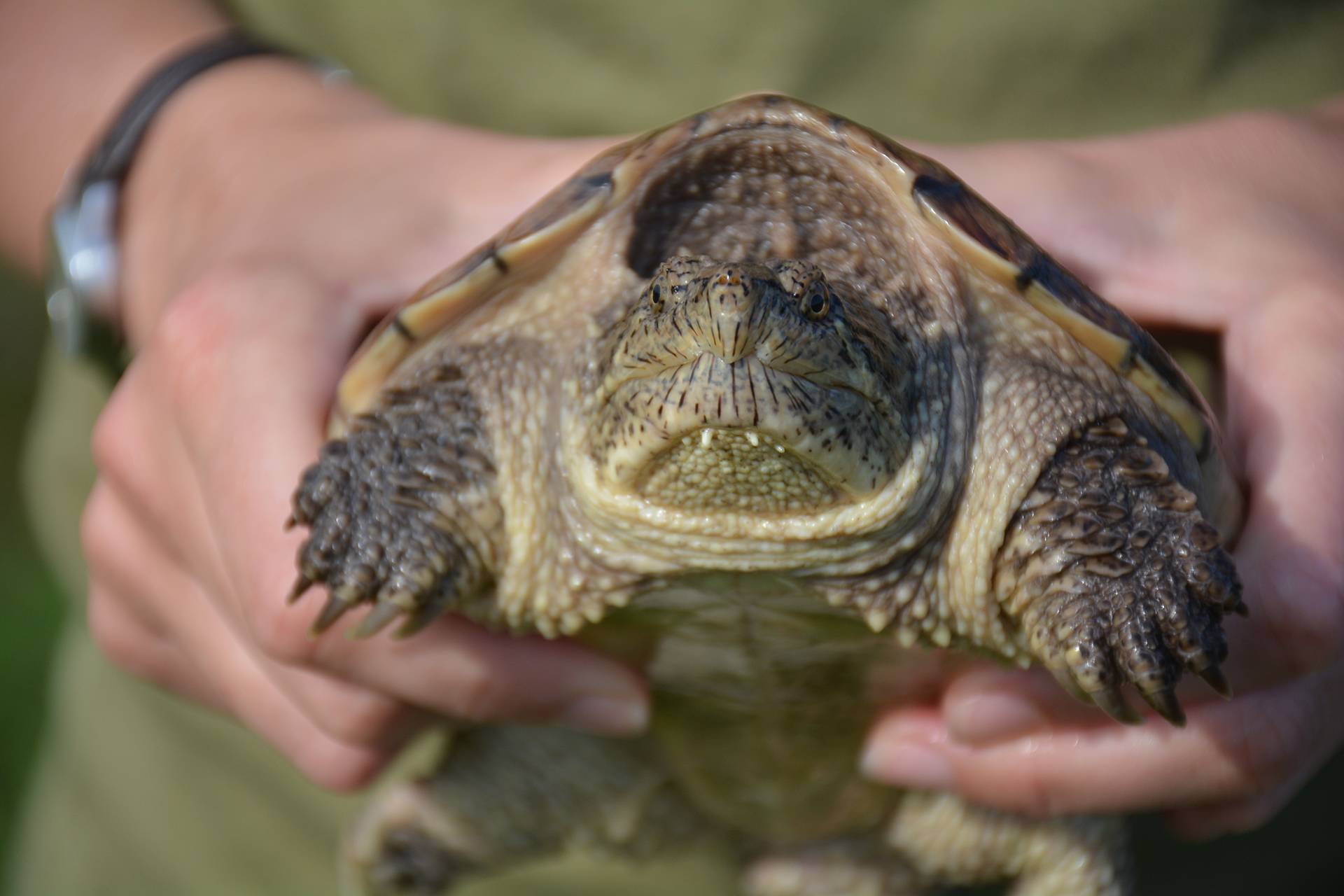Our Very Own Freshwater Dinosaur


The common snapping turtle is arguably the most misunderstood reptile on the South Fork — especially due it its large, powerful jaw that is its namesake. While you do need to be careful around these creatures, there is much more to attribute to them than aggression.
“Snappers,” as they are often called by people who love and study them, are one of my favorites. I am an advocate for them, and it is unfortunate that they are so misunderstood. An animal does not have to be charismatic or personable for us to appreciate it. In fact, I think we should stand in awe that these creatures still roam the Earth at all. During a reptile program I lead at the South Fork Natural History Museum 3- to 5-year-old children sat around a large snapping turtle on display, pointing to her and saying, “Dinosaurs aren’t extinct.” They’re not wrong. We have our very own freshwater dinosaur in our midst.
The snapping turtle’s lineage dates back millions of years. Resembling their prehistoric reptilian ancestors, these turtles are hardy and primitive in appearance. They are dark in color and covered in thick scales, including slightly keeled keratin scutes that case their shell, and saw-toothed keels, or spikes, down their long tail. One of the largest turtle species that inhabit the South Fork, they can grow to be 45 pounds and 20 inches in top shell (carapace) length during their average 40-year lifespan. Their bottom shell, or plastron, is greatly reduced in comparison to other turtle species. Snapping turtles also have a long neck that can bend back far behind them. For this reason, they were duly assigned the scientific name Chelydra serpentina, meaning “water turtle with a snake-like neck.”
This robust turtle is one of the most abundant and widely-distributed turtles in New York. They can be found in just about any freshwater habitat, but generally prefer slow-moving waters with muddy substrates. They are even known to inhabit polluted waters.
Active primarily from March through October, snapping turtles are most commonly found on land during June, when females leave the pond to lay anywhere from 25 to 50 eggs in the soil. In colder months, they hibernate on pond bottoms. Though they have the appearance of a carnivorous animal, snapping turtles are omnivores — eating just about anything from aquatic vegetation to fish, amphibians, snakes, other turtles, and crayfish, to small birds and mammals. They are important members of our local ecosystems.
Snappers are surrounded by many misconceptions. While known for their aggression on land, these reptiles are very calm in the water, and prefers to slip away quietly from disturbances rather than fight. They only snap on land because they are frightened. They have adapted a strong beak to compensate for evolutionary shortcomings, like being slow-moving out of water and unprotected from danger with a small bottom shell.
For this reason, you need to be careful when handling them, but there is a proper way to do so to make sure both you and the turtle are safe. Lift them up and away from your body by the rear end of the shell. This will protect you from their bite and large claws. Picking them up by their tails will do far more harm than good.
On Saturday, August 31, at 10 AM, The South Fork Natural History Museum’s President of the Board of Directors, Andy Sabin, will be leading his annual program, “Snapping Turtles: Andy’s Annual Prehistoric Monster Hunt.” Please call the museum at 631-537-9735 or email sofo@hamptons.com to register or for more information.
Rachel Speckenbach is an environmental educator at the South Fork Natural History Museum & Nature Center and has previously worked as a field biologist. She graduated from the SUNY College of Environmental Science and Forestry with a B.S. in Conservation Biology.



